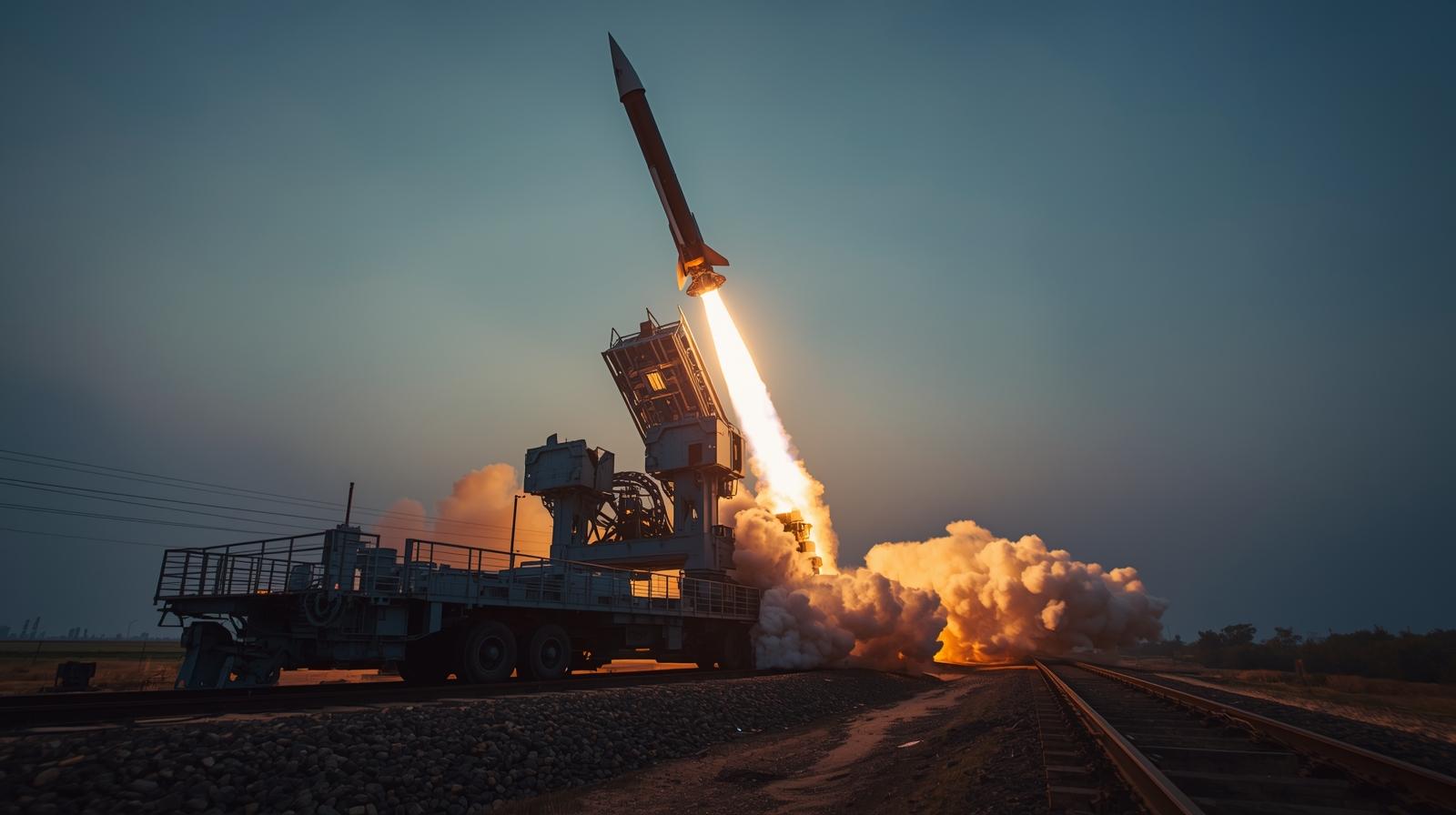By Ch. Haroon Rashid
India has taken a decisive step in its missile modernization journey. On September 24, 2025, the Defence Research and Development Organisation (DRDO) conducted the first-ever rail-based launch of the Agni-Prime intermediate-range ballistic missile, a milestone that significantly boosts India’s strategic mobility and missile survivability.
The Test and Its Significance
The Agni-Prime, capable of striking targets up to 2,000 km away, was launched from a self-contained, rail-mobile launcher under a full operational scenario. This system can move across India’s extensive railway network, deploy from remote locations, and launch without preconditions — a crucial feature that increases survivability in the event of a pre-emptive strike by an adversary.
Defence Minister Rajnath Singh confirmed the success, calling it a “major step in strengthening India’s credible minimum deterrence posture.” The test validated the missile’s precision, reliability, and operational readiness.
Strategic Advantages of Rail-Based Launchers
🚆 Mobility and Concealment
Rail-based systems can blend with regular freight trains, making them extremely difficult to detect or target. They can be stationed in tunnels, remote sidings, or dispersed along rail networks, complicating enemy surveillance.
🛡 Survivability
Unlike fixed silos that are vulnerable to precision strikes, rail-mobile launchers can relocate after detection, ensuring that India retains a credible second-strike capability even under a nuclear threat.
⚡ Operational Flexibility
Launchers can be quickly repositioned to multiple launch points across the country, bringing missiles closer to potential conflict zones or keeping them deep inside Indian territory for safety.
✅ Deterrence Credibility
Continuous mobility and patrol readiness enhance the credibility of India’s no-first-use doctrine, signaling that retaliation would remain certain even after a surprise attack.
Regional and Global Implications
The test carries significant implications for South Asia’s strategic environment:
- For Pakistan: The mobility of Agni-Prime complicates Pakistan’s counterforce planning and increases the survivability of India’s nuclear forces, strengthening its deterrent.
- For China: India’s ability to hold strategic targets deeper inside Chinese territory adds leverage to its deterrence posture and signals continued modernization of its nuclear triad.
- Globally: With this test, India joins the small club of nations — including Russia and the United States — that have fielded or experimented with rail-based missile launch systems, showcasing its growing technological sophistication.
Conclusion
The successful rail-based Agni-Prime missile test is more than a technological feat — it is a strategic milestone. By adding rail mobility to its missile arsenal, India ensures that its nuclear deterrent remains survivable, credible, and ready under all scenarios. This development reshapes the strategic calculus in South Asia and sends a strong message to adversaries: India’s deterrence is now more mobile, elusive, and resilient than ever.










